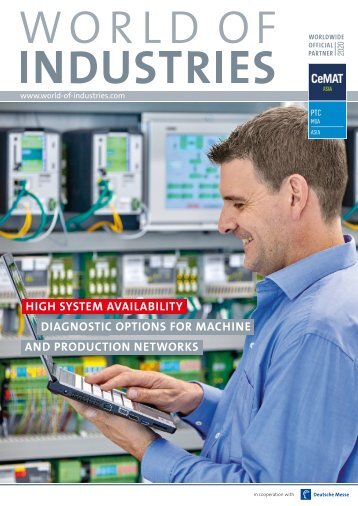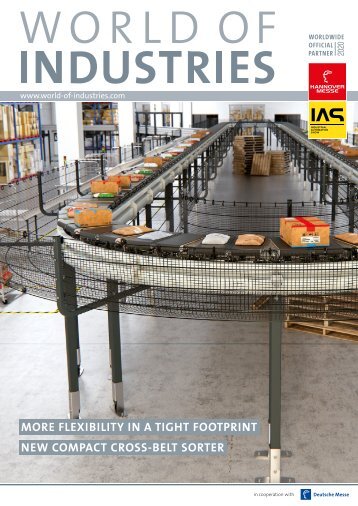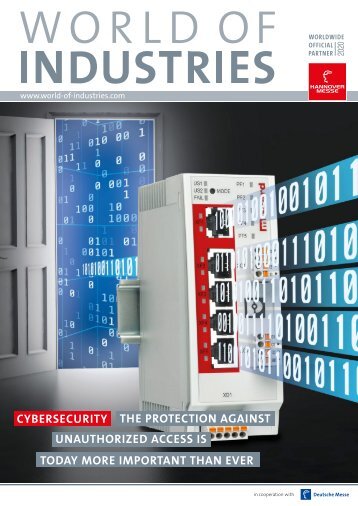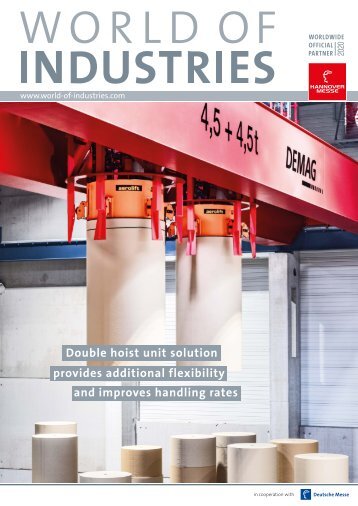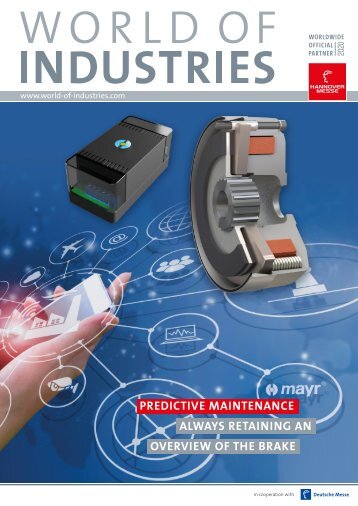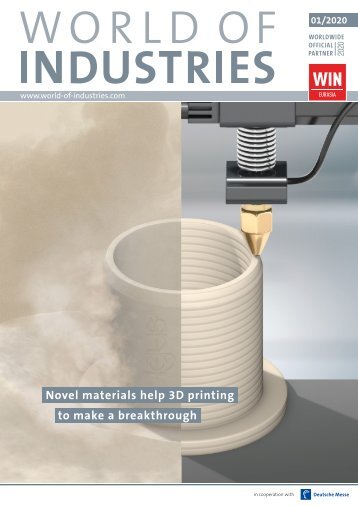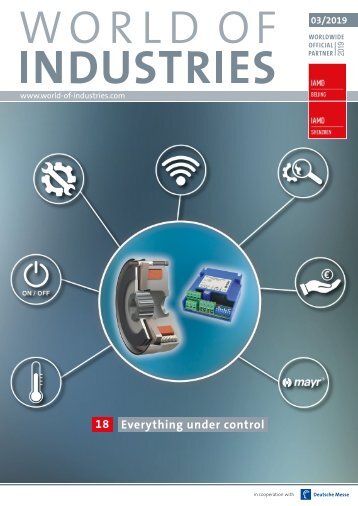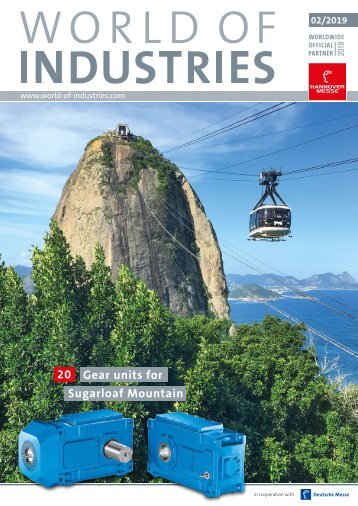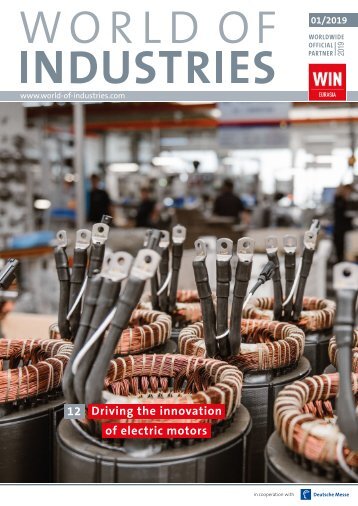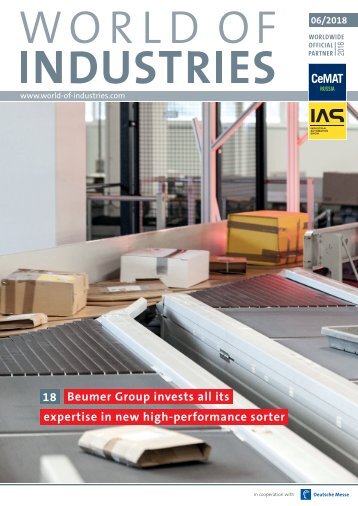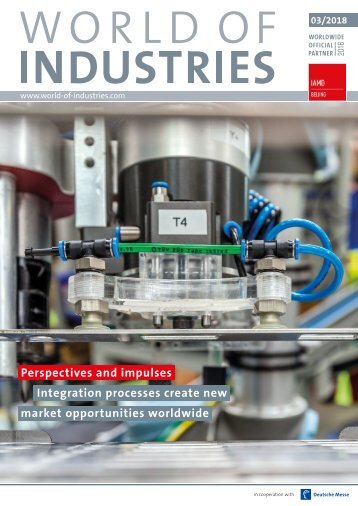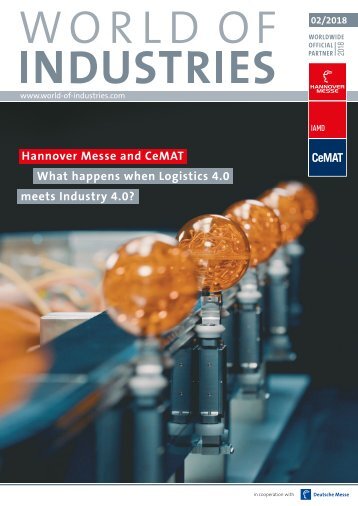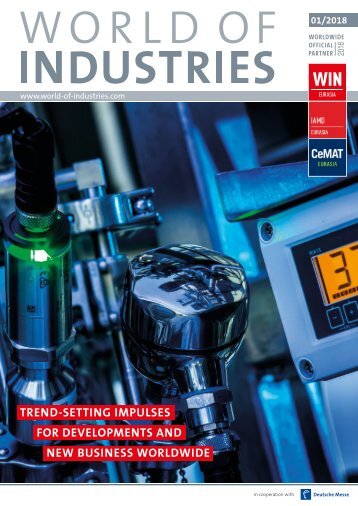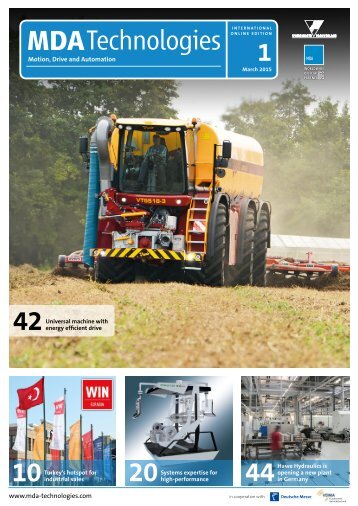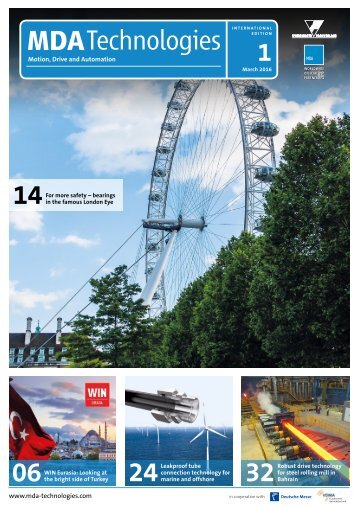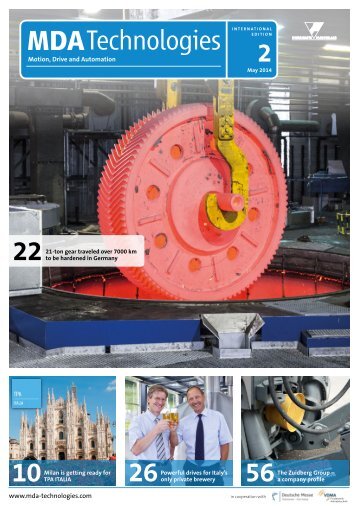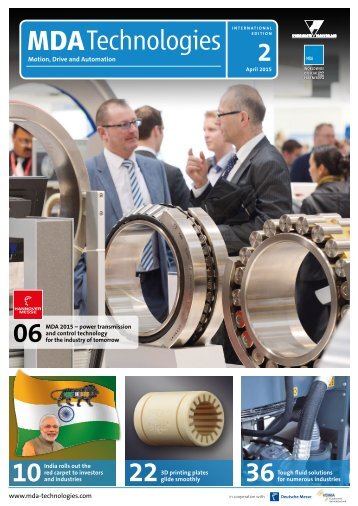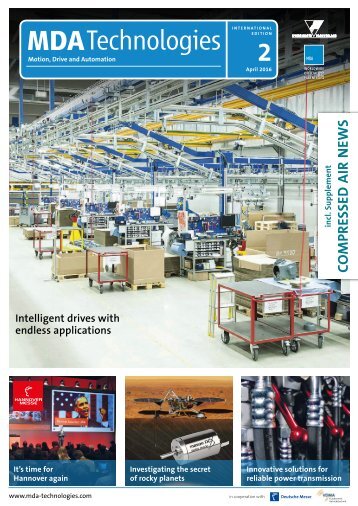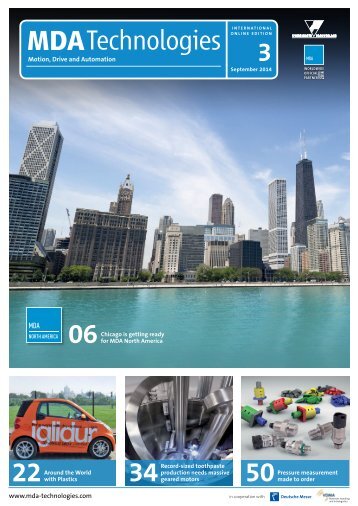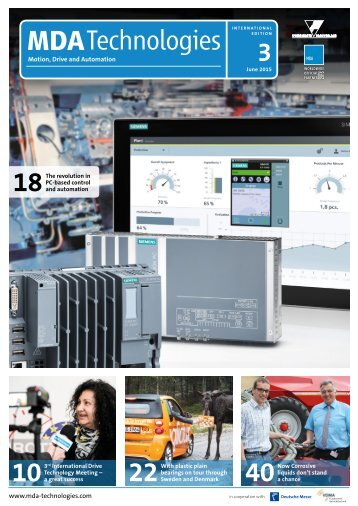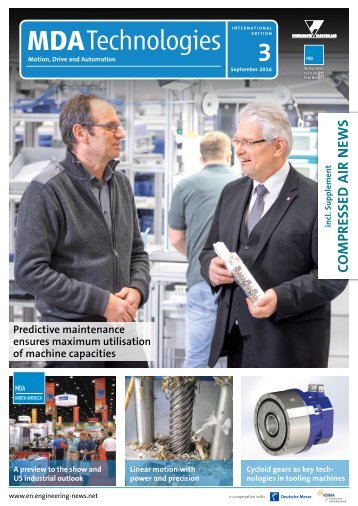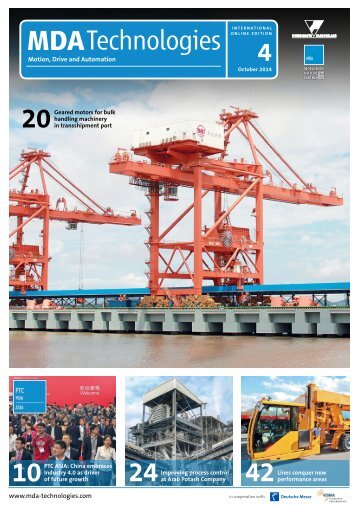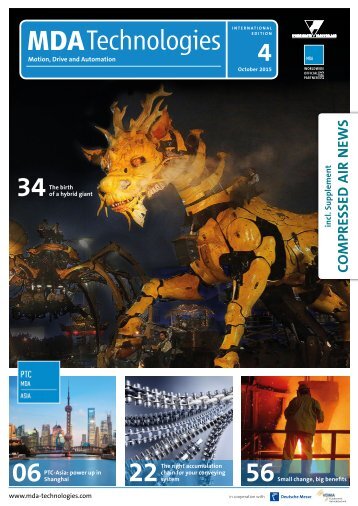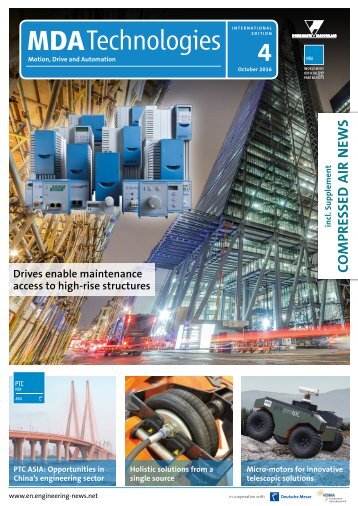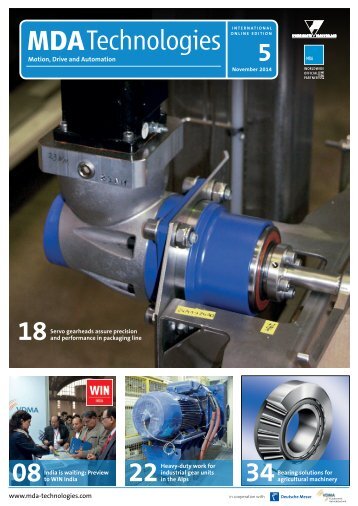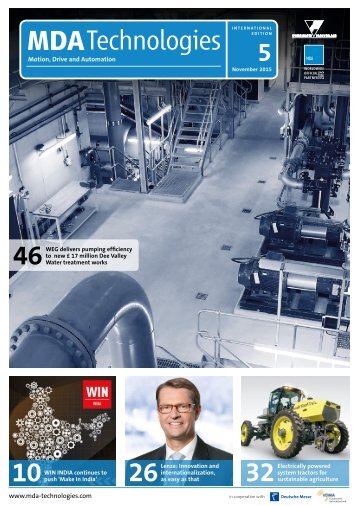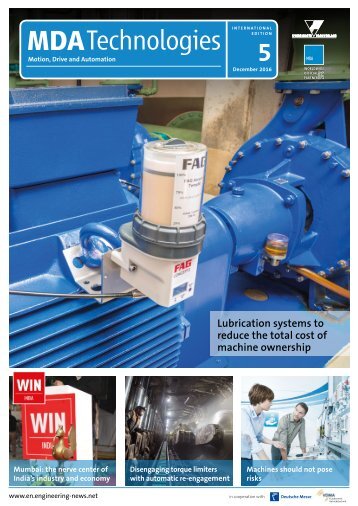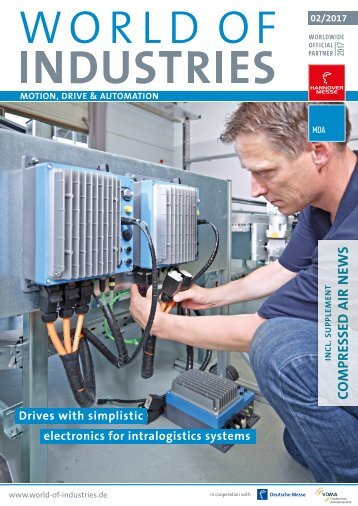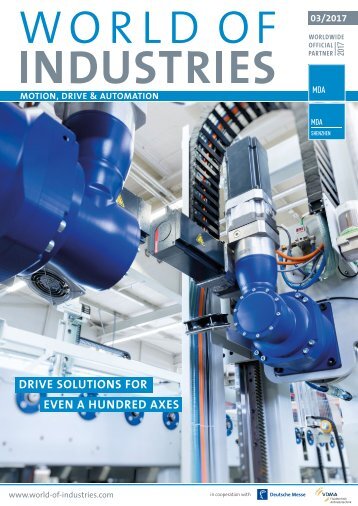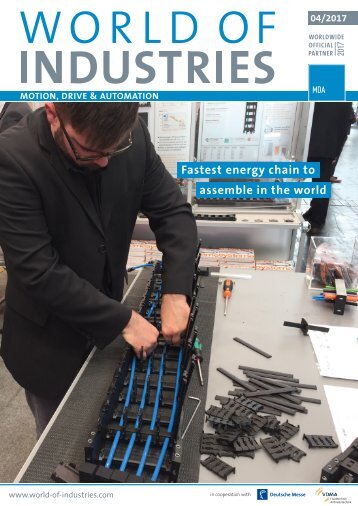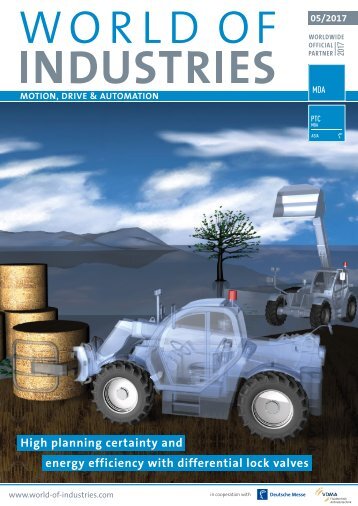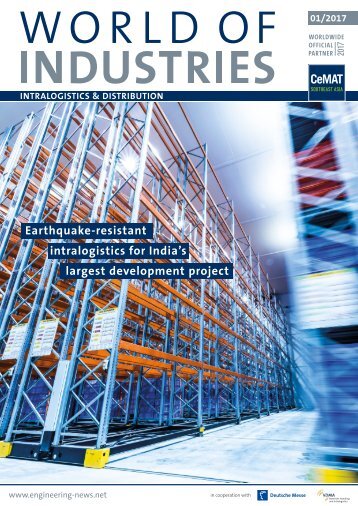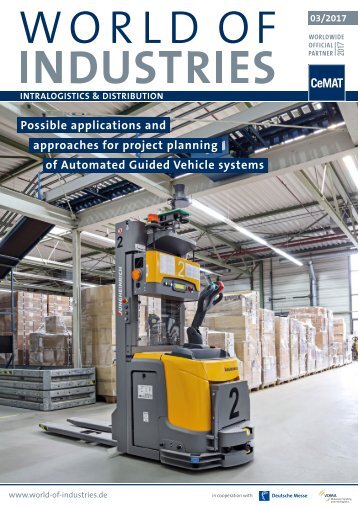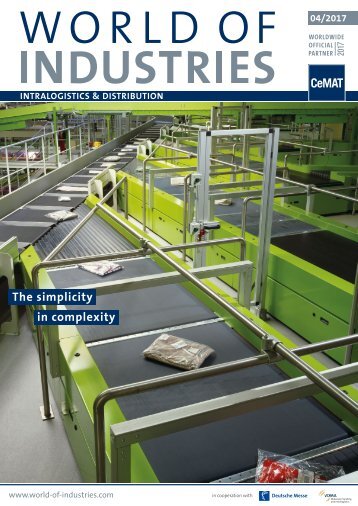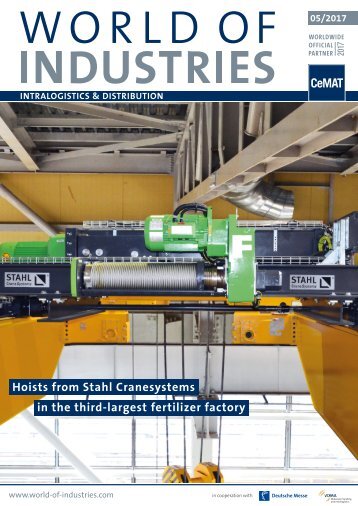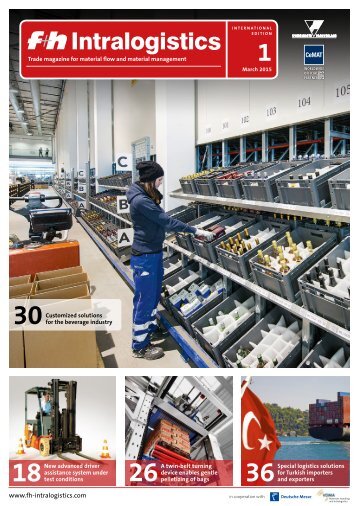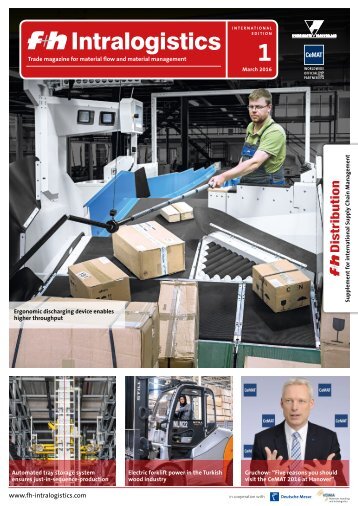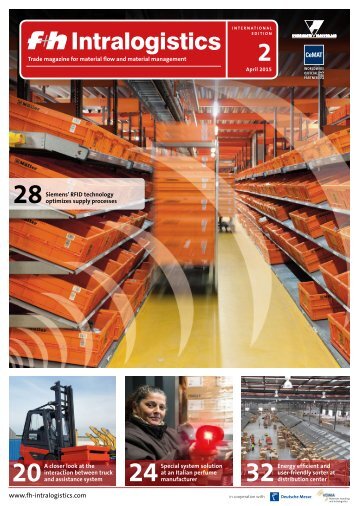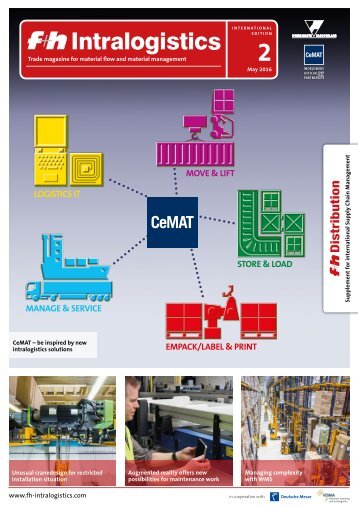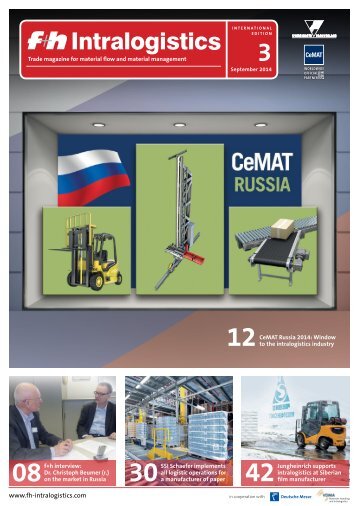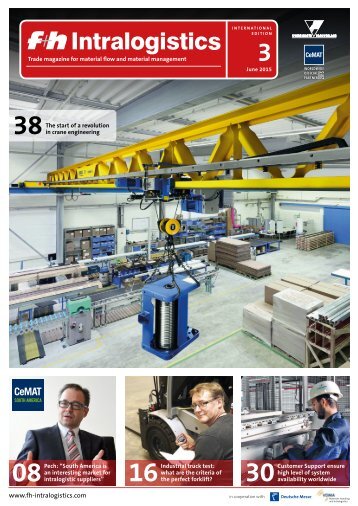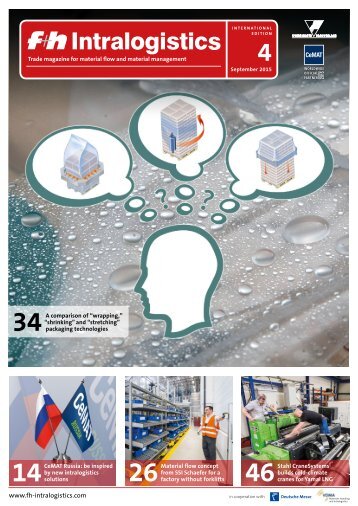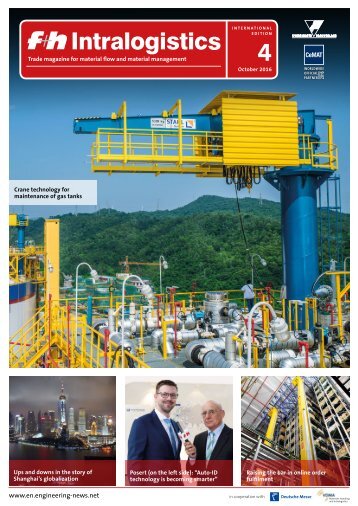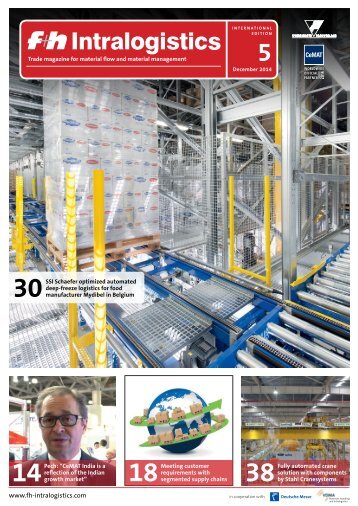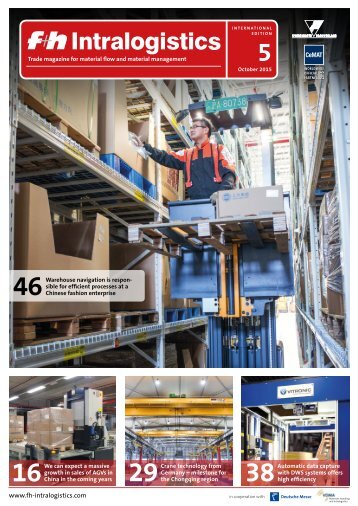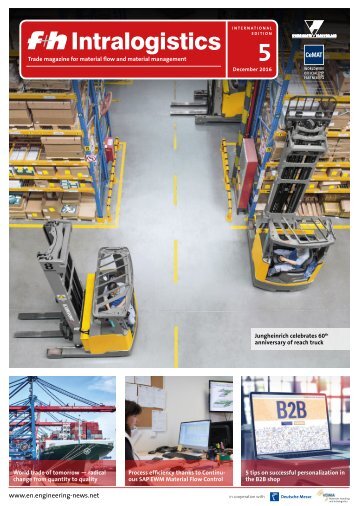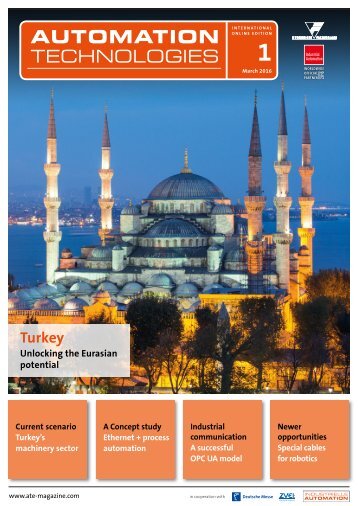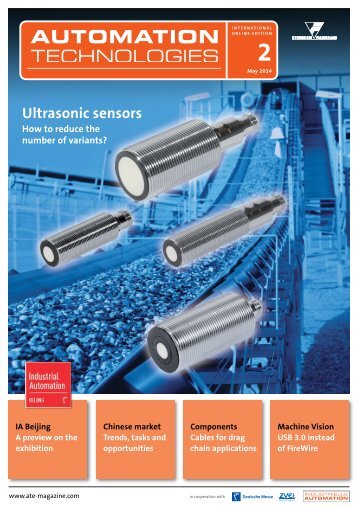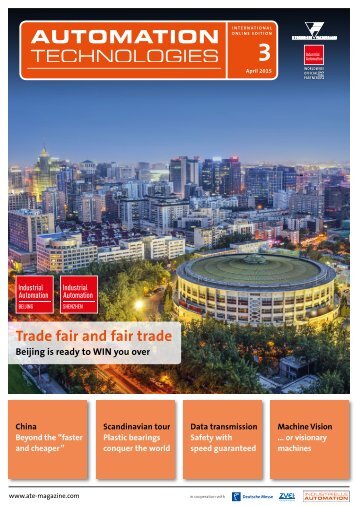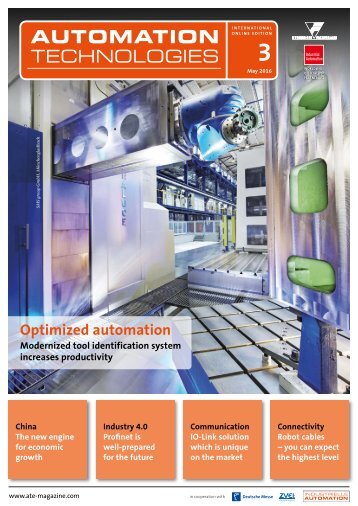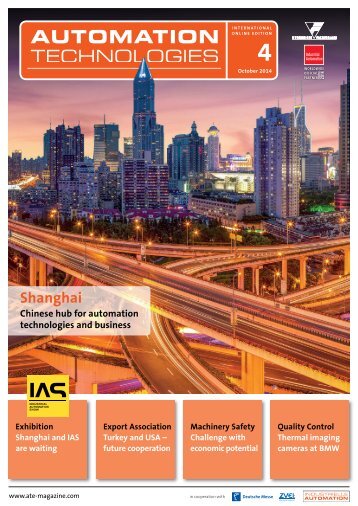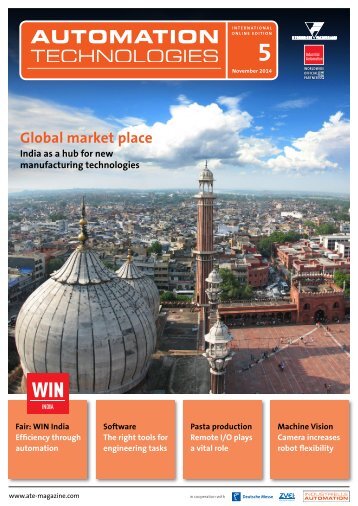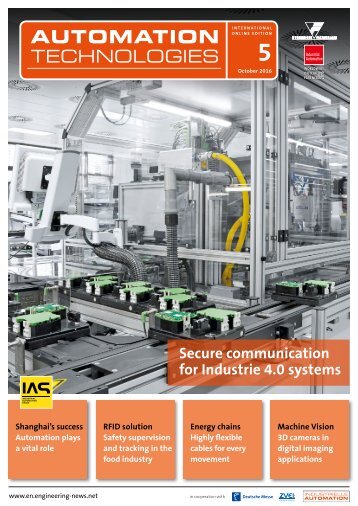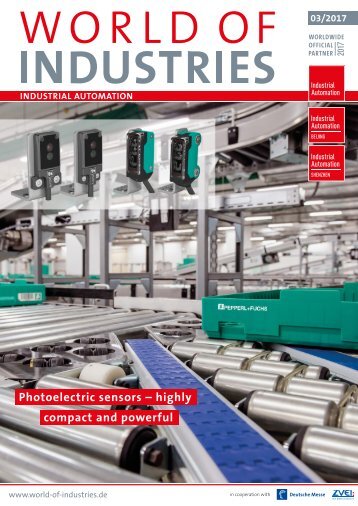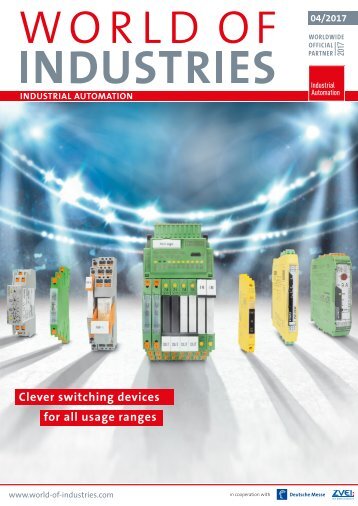f+h Intralogistics 4/2015
- Text
- Fuh
- Intralogistics
MATERIAL FLOW Well
MATERIAL FLOW Well maintained lasts longer Material handling systems help to protect and expand a company’s competitive advantage. It is important for systems to meet requirements and expectations in terms of performance, throughput, ergonomics and safety. Existing systems can be easily modified to meet today’s requirements with no replacement or new construction. This is the principle behind the terms RMR (revision, modification and retrofit) and lifecycle service. Like any technical system, an intralogistics system is subject to aging and wear from the beginning. The further this process progresses, the greater the risks of system failures occurring at unfavorable times. Especially in IT, for control units and material flow computers or warehouse management systems, risks arise from the lifecycles of hardware and software and the operating systems. System operators are therefore well advised to monitor these processes from the beginning and control them with the right means to minimize risks. The means of choice is a lifecycle plan that considers all the important key points. The same questions are asked repeatedly: n What maintenance costs should be planned for over the runtime of the system? n When do the components reach the end of their service life? n Will there be additional risks because parts are no longer available due to discontinuations? n Will capital expenditures be needed to comply with current safety regulations? n What capital expenditures should be planned for over the runtime of the system? A comprehensive lifecycle plan answers these questions in detail and serves as the 22 f+h Intralogistics 4/2015
MATERIAL FLOW 01 Trend of after-sales costs basis for planning all the necessary measures to meet relevant needs. System documentation is important About Vanderlande Every system requires regular care and maintenance to function with high availability for a long time. The measures required for this are developed from system documentation. The best way to plan for them is by using a maintenance management system, not only for the design, but also for resulting costs. All system components have a certain service life determined by their design and construction. Mechanical parts should reach a service life of 25,000 to 30,000 operating hours, provided they are not typical wear parts. The service life of electrical components is defined instead by the number of switching operations. Electronic parts are also subject to a certain service life (Image 01). Operating system = safety risk? Many system components, especially control units and hardware, are less subject to service life problems and much more subject to the risk of being discontinued by the manufacturer. These components are replaced by new series and are then no longer available as replacement parts. In some circumstances the subsequent component can only be used after making extensive Vanderlande, based in Veghel/Netherlands, is a global market leader in baggage handling systems for airports, and sorting systems for parcel and postal services. The company is also a leading supplier of warehouse automation solutions. Established in 1949, Vanderlande has more than 3,300 employees, all committed to moving its customers’ businesses forward at diverse locations on every continent. With a consistently increasing turnover of more than one billion euros, it has established a global reputation over the past six decades as a highly reliable partner for valueadded automated material handling solutions. changes to the entire system. Unless prompt action is taken with the right measure of response, the resulting long-term system downtimes may be fatal. This problem also occurs with software and operating systems. The most recent example is the discontinuation of Windows XP. This operating system is required by numerous control systems as the basis of functionality. A 1:1 replacement is only possible a few cases. The result: Anyone who had no response to the discontinuation will have to live with the possible safety risks until the application software is adapted to another operating system. Finally, system safety should also be part of this examination. Often safety regulations change or possibilities emerge to enhance safety, which entail significant obligations for employers in their duty of care for employees. A sound lifecycle plan will therefore begin with a list of all system components in the corresponding groups. The expected service life is determined for each component. This can be a time-consuming task in some cases and inherently involves a certain fuzziness, as such considerations always depend greatly on the operating and upkeep conditions of the relevant system. Another challenging issue is determining the market availability of components. This brings up questions, such as: n How long has a product already been introduced to the market? n Is the product still at the state of the art? n Does the component come from a wellknown manufacturer or from some dubious source? n What is the manufacturer‘s delivery policy and to what extent are product discontinuations reliably communicated? Implementing plans strategically The next important step is to develop a strategy for implementing the plan. The basis is always the information determined for the relevant components. The earlier basic planning is in place, the more successfully it can be compared with reality by continuously observing individual factors. For example, does the service life of mechanical components progress as anticipated or do times need to be adjusted? The maintenance and repair history documented in a maintenance management system is extremely important for answering this question. After all, the history shows how f+h Intralogistics 4/2015 23
- Page 1 and 2: Intralogistics Trade magazine for m
- Page 3: TABLE OF CONTENT 06 News an informa
- Page 6 and 7: Worldwide News Additional huge join
- Page 8 and 9: INVESTMENT POLICY The sanctions and
- Page 10 and 11: INVESTMENT POLICY 02 What should th
- Page 12 and 13: GLOBAL BUSINESS Hellmann expands in
- Page 14 and 15: CEMAT RUSSIA NEWS Opportunities in
- Page 16 and 17: CEMAT RUSSIA NEWS part of this. The
- Page 18 and 19: INTRALOGISTICS Specific solutions f
- Page 20 and 21: INTRALOGISTICS Intralogistics at Bi
- Page 24 and 25: MATERIAL FLOW often parts have been
- Page 26 and 27: MATERIAL FLOW Tugger train solution
- Page 28 and 29: MATERIAL FLOW 02 Source pallets wit
- Page 30 and 31: MATERIAL FLOW Mechanized unloading
- Page 32 and 33: MATERIAL FLOW 03 With their special
- Page 34 and 35: PACKAGING TECHNOLOGY A comparison o
- Page 36 and 37: PACKAGING TECHNOLOGY requires a lot
- Page 38 and 39: WAREHOUSING Grob relies on automate
- Page 40 and 41: SOFTWARE Bringing complex process a
- Page 42 and 43: INDUSTRIAL TRUCKS I FORKLIFT TEST R
- Page 44 and 45: INDUSTRIAL TRUCKS I FORKLIFT TEST 0
- Page 46 and 47: CRANES & HOISTS SABETTA HAMBURG KÜ
- Page 48 and 49: CRANES & HOISTS cal expertise but i
- Page 50 and 51: CRANES & HOISTS The Demag KBK Aluli
Inappropriate
Loading...
Mail this publication
Loading...
Embed
Loading...

